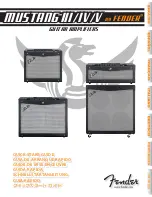
7
As you feed more complex, harmonically-rich signals into the unit – complex chords, complex waveforms or
whole mixes – the distorted result will sound more glitchy, noisy and crushed, because of all the clashing
extra harmonics produced as a result of the distortion.
Guitar power chords tend to consist of a small number of notes with simple harmonic relationships, like fifths
and octaves – so they contain a moderately simple harmonic mix. They sound fantastic when they distort
because of the way the extra distortion harmonics interact with each other and with the harmonics of the
original sound. Enough complexity to bite, but not so complex that the distorted result sounds like it’s
breaking up.
Again, I recommend playing with lots of different input signals. Get to know how your unit behaves with
harmonically simple and harmonically complex inputs.
Clean spring reverb
Setting the input switch up (lowering the input level) and the master drive fairly low
, carefully turn up
the unit’s
master out
,
reverb
and
original
knobs to mix clean spring reverb with your original sound.
This effect works particularly well with percussive noises – you’ll hear sudden transient signals wobbling the
spring.
You can turn down the original signal completely so that the unit’s output mix contains only reverb. This
setting allows you to use the unit as a spring reverb send effect.
Reverb times
Shorter springs generally mean shorter reverb times, so you can get different effects from the two spring
tanks that come with the unit.
Colouring and damping reverb
The unit’s bass and treble cut switches are useful for making reverbs sound less boomy or harsh, and used
together will help the reverb sound sit less obtrusively in your mix.
I’ve also experimented with damping the reverb with a small piece of foam sponge sitting on top of the spring
itself. This works well with percussion: you’ll hear the characteristic spring wobble without the more diffuse
reverb “tail” at the end.
Extreme spring reverb
Because you have access to open spring reverb tanks, you’ll need to take care looking after them, but you
can create crazy sounds – totally unachievable in software or with digital equipment – by gently twanging the
springs or running a coin along them.
Be gentle – while the springs themselves are resilient, the transducer used to drive them is more delicate.



























